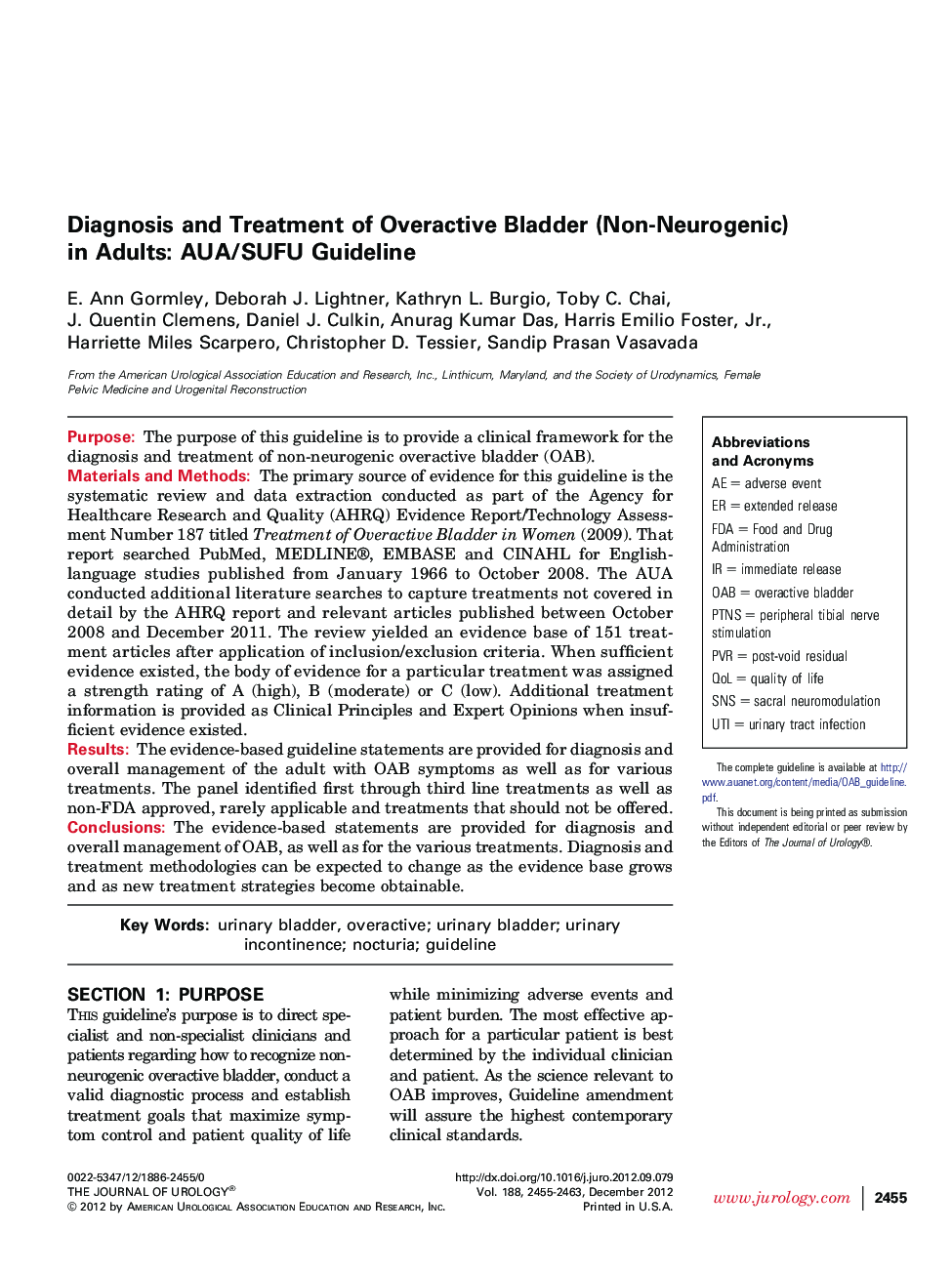| کد مقاله | کد نشریه | سال انتشار | مقاله انگلیسی | نسخه تمام متن |
|---|---|---|---|---|
| 3861624 | 1598927 | 2012 | 9 صفحه PDF | دانلود رایگان |

PurposeThe purpose of this guideline is to provide a clinical framework for the diagnosis and treatment of non-neurogenic overactive bladder (OAB).Materials and MethodsThe primary source of evidence for this guideline is the systematic review and data extraction conducted as part of the Agency for Healthcare Research and Quality (AHRQ) Evidence Report/Technology Assessment Number 187 titled Treatment of Overactive Bladder in Women (2009). That report searched PubMed, MEDLINE®, EMBASE and CINAHL for English-language studies published from January 1966 to October 2008. The AUA conducted additional literature searches to capture treatments not covered in detail by the AHRQ report and relevant articles published between October 2008 and December 2011. The review yielded an evidence base of 151 treatment articles after application of inclusion/exclusion criteria. When sufficient evidence existed, the body of evidence for a particular treatment was assigned a strength rating of A (high), B (moderate) or C (low). Additional treatment information is provided as Clinical Principles and Expert Opinions when insufficient evidence existed.ResultsThe evidence-based guideline statements are provided for diagnosis and overall management of the adult with OAB symptoms as well as for various treatments. The panel identified first through third line treatments as well as non-FDA approved, rarely applicable and treatments that should not be offered.ConclusionsThe evidence-based statements are provided for diagnosis and overall management of OAB, as well as for the various treatments. Diagnosis and treatment methodologies can be expected to change as the evidence base grows and as new treatment strategies become obtainable.
Journal: The Journal of Urology - Volume 188, Issue 6, Supplement, December 2012, Pages 2455–2463